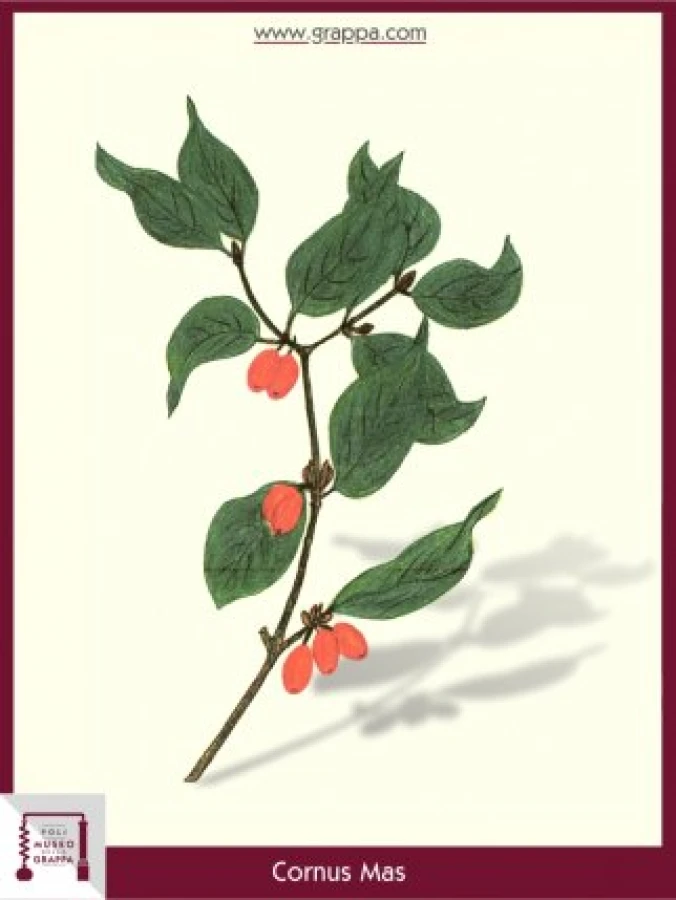Dangerously thirst-quenching
Cornelian cherry, European cornel
Dangerously thirst-quenching
Plant:
Cornelian cherry, European cornel
Plant Part:
fruit
Plant Properties:
astringent, fever reducer, tonic, antidiarrheal, febrifugal, thirst-quenching, alleviates haemorrhoids
Description:
The wrong convinction among the ancients that there were two types of Cornelian cherry, one male and one female, led authors to classify the Cornelian cherry as Comus Mas (male Cornelian cherry).
Both Virgil and Theophrastus did in fact mention a Cornelian cherry, defining it male, which was then called Comus Mas, while the so-called female Cornelian cherry to Pliny was nothing more than the Comus Sanguinea or even a species of flowering plant in the dogwood family Cornaceae.
The question was not resolved even at times of Castor Durante, in the sixteenth century, who used to say „To have two kinds, that is the male and the female. The male plant has leaves very similar to those of the Comus Sanguinea: it has an irritable and thin bark, the texture of its wood is hard and firm, similar to horn, from which he has taken the name. It grows up to twelve meters. The female plant, as having few trunk is very similar to the vitex (monk's pepper) and is therefore less firm and much more vencide than the male plant".
Due to the fact that the Cornelian cherry is a monoecious and not a dioecious plant, how might indicate these references, such a distinction is absolutely fictitious; but this was only discovered at the time of definitive scientific classification, or rather the time of Linnaeus.
Both ancient and modern agree at least in one aspect of this plant: its medicinal properties. According to full reports, the fruit of the cornelian cherry has an astringent effect and is in fact suitable to alleviate all forms of intestinal with diarrheal component.
This property is due to the mucilages, the tannin content, the organic acids and the sugar, which gives the fruit its characteristic pleasant sweet-sour taste.
Everyone knows the jam, prepared with cornelian cherries, which is appreciated by children and useful to solve diarrheal events.
For other reasons we recommend preparing a grappa of cornelian cherry: even if it does not have an astringent effect, it is in fact a particularly pleasant liqueur whose taste is very similar to the slavic "Sligovitza" and has a "dangerous" thirst-quenching property. Finally, it should not be forgotten that it is anyway alcohol.
Ingredients:
- 2 handfuls of ripe Cornelian cherry
- 1 liter of Grappa
Preparation:
Two handfuls of ripe fruits are placed in a litre of Grappa for two months.
The Grappa must be aged for six months so that the grappa can unfold its „full" aroma. Of course the fruits can also be consumed together with the grappa.


